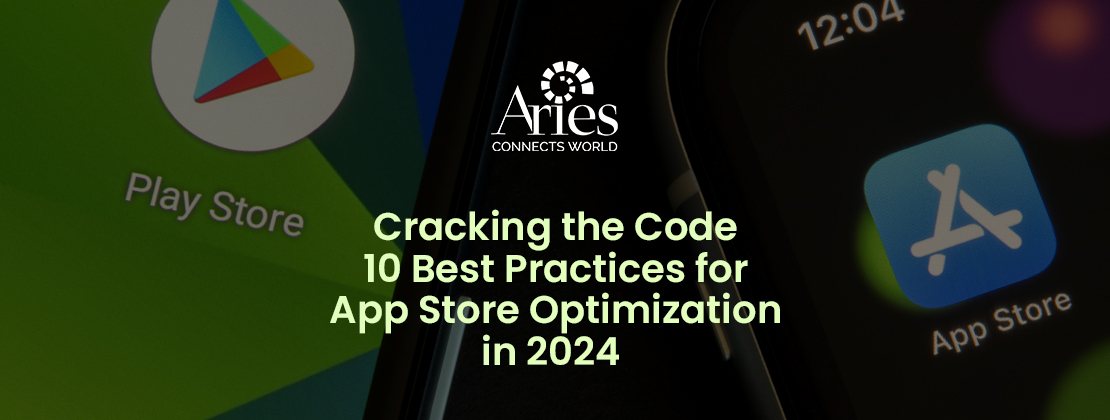
Jun 08, 2024. Home / Manchester / Marketing
App Store Optimization (ASO) remains a crucial strategy for mobile app developers and marketers looking to increase visibility and downloads in an increasingly crowded marketplace. As we move through 2024, the competition is fiercer than ever, and staying ahead requires updated strategies and a deep understanding of evolving trends. Here are ten best practices for ASO in 2024 that can help you crack the code and boost your app's performance.
Effective keyword research is foundational to ASO. Use tools like App Annie, Sensor Tower, or Mobile Action to identify relevant keywords with high traffic and low competition. Integrate these keywords naturally into your app title, subtitle, and description. Remember, keyword optimization isn’t a one-time task; regularly update your keywords based on seasonal trends and changing user behavior.
Tips:
Focus on long-tail keywords that are specific to your app’s niche.
Avoid keyword stuffing; ensure that the text remains readable and engaging.
Your app’s title and subtitle are prime real estate for ASO. The title should include your primary keyword and convey the app's core function or value proposition. The subtitle can provide additional context or highlight key features, integrating secondary keywords.
Tips:
Keep the title short, memorable, and brand-centric.
Regularly A/B test different title and subtitle combinations to find the most effective ones.
Your app icon is the first visual element users see, making it a crucial aspect of ASO. It should be simple yet distinctive, reflecting your app’s purpose and appealing to your target audience. A well-designed icon can significantly impact click-through rates.
Tips:
Test different icon designs to see which one performs best.
Ensure the icon is clear and recognizable even at smaller sizes.
Screenshots and videos are essential for demonstrating your app’s features and usability. High-quality, descriptive screenshots and an engaging video can significantly boost conversion rates.
Tips:
Highlight key features in the first few screenshots.
Use annotations to describe the functionality shown in screenshots.
Create a 30-second preview video that showcases the app’s main benefits and user interface.
The app description should be informative and persuasive, highlighting key features and benefits. While the first few lines should grab the user’s attention, the rest of the description should provide a comprehensive overview of what the app offers.
Tips:
Break the description into easily digestible sections using bullet points.
Include a call to action to encourage downloads.
Update the description regularly to reflect new features and updates.
User reviews and ratings are critical to your app's reputation and ranking. Encourage satisfied users to leave positive reviews and respond promptly to feedback, whether positive or negative.
Tips:
Use in-app prompts to request reviews after a positive interaction.
Address negative feedback constructively and show that you are making improvements based on user suggestions.
Regular updates signal to both users and app stores that your app is actively maintained and improved. Update your app with new features, bug fixes, and performance enhancements regularly.
Tips:
Highlight new updates in the app description and What’s New section.
Use push notifications to inform users about major updates.
Localization can significantly increase your app's reach and downloads in different regions. Translate your app’s metadata (title, description, keywords) and content (UI, help, and support) into multiple languages to appeal to a global audience.
Tips:
Conduct local keyword research to ensure relevance.
Adapt the app’s content to cultural nuances and preferences.
Continuous improvement through data-driven decisions is key. Utilize app store analytics to track performance metrics like download rates, user engagement, and conversion rates. A/B test different elements of your app store listing to optimize for the best performance.
Tips:
Regularly review and analyze analytics data to identify areas for improvement.
Conduct A/B tests on elements such as app icon, screenshots, title, and description.
Stay ahead by regularly analyzing your competitors. Understand their ASO strategies, keyword usage, user reviews, and visual assets. Learn from their successes and mistakes to refine your own approach.
Tips:
Use ASO tools to track competitor keywords and rankings.
Identify gaps in their offerings that your app can fill.
App Store Optimization in 2024 requires a strategic, data-driven approach that adapts to changing market dynamics and user behaviors. By implementing these best practices, you can enhance your app’s visibility, attract more users, and ultimately increase downloads. Remember, ASO is an ongoing process, and staying informed about the latest trends and updates in the app store ecosystem is crucial for sustained success.
You can get in touch with ACW Circle for the best the app store optimization. We have a team of experts with years of experience in impressing various online business.
ACW Circle Contact Details:
|
Address |
201 Murfreesboro Hwy, Manchester, TN 37355, United States |
|
Phone |
1 (615) 713-2233 |
1. What Is App Store Optimization (ASO)?
App Store Optimization (ASO) is the process of improving an app's visibility and ranking in app stores to increase downloads.
2. Why Is Keyword Research Important For ASO?
Keyword research helps identify relevant terms that potential users search for, improving your app’s visibility and ranking in search results.
3. How Often Should I Update My App For Aso?
Regular updates with new features, bug fixes, and improvements signal to app stores and users that the app is actively maintained, boosting its ranking and appeal.